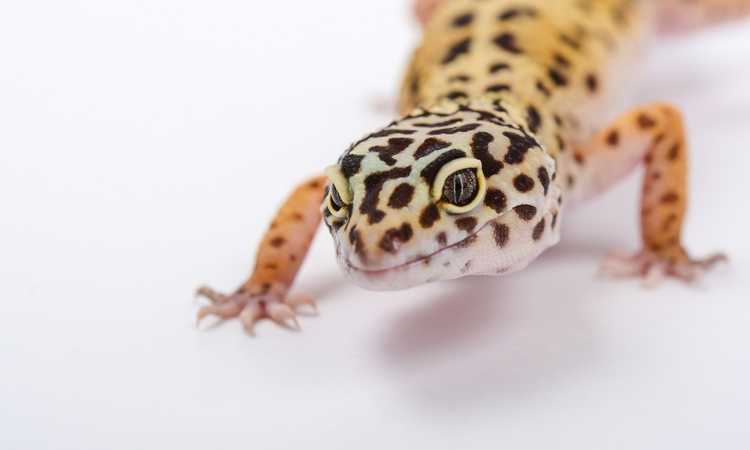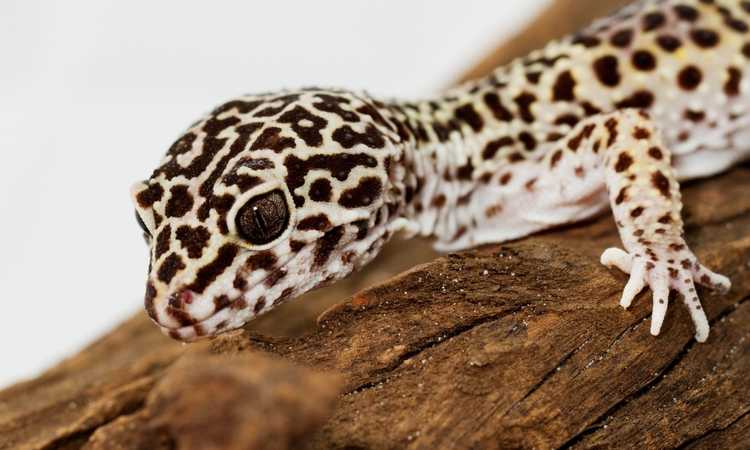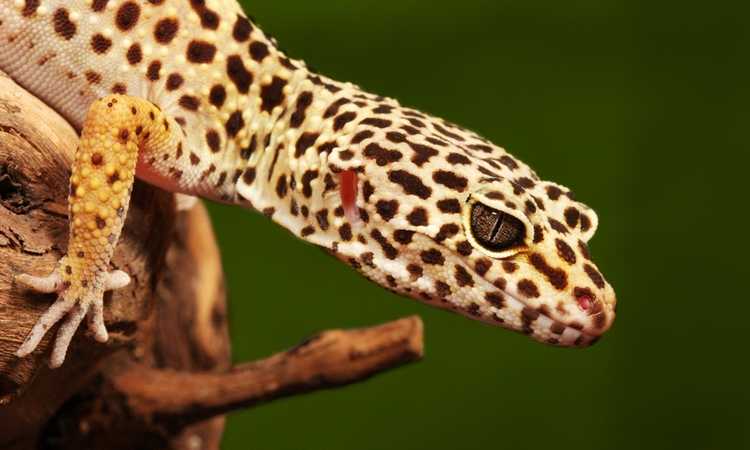When considering adding a leopard gecko to your family, it is important to do your research and find the healthiest possible option. Not all leopard geckos are created equal, so it is important to know what to look for when choosing a healthy leopard gecko.
In this blog post, we will discuss some tips on how to choose a healthy leopard gecko. So, whether you are a first-time lizard owner or just looking for a new addition to your family, keep reading for some helpful advice!
There are many leopard geckos that have amazing colors and interesting patterns. However, if your lizard is not healthy, these characteristics will not be of any value. Your new pet must be healthy.

Give your gecko a head to-toe inspection
To ensure a healthy gecko, you should inspect the following areas:
Body outline:
A healthy leopard gecko needs a smooth body. The body should look slightly rounded, but not too fat. Also, the hip bones should not be visible. The geckos’ sides should be rounded. Also, the tummy and ribs should not be sunken in. Do not choose a gecko that has bumps or lumps under its skin. These could be abscesses or broken bones or tumors.
Skin:
The skin should not be stained. The gecko is at greater risk for disease and parasites if the skin is stained or covered in feces. Overcrowding can lead to geckos fighting, which can result in skin injuries, missing tails and missing toes.
You should look for reddish, brown, or black spots on your skin. These mites may be found around the neck and in the armpits. If disturbed, they will move. These mites are called aphids. These mites are not good for your gecko.
Below:
There are some places that have heat (or hot!) rocks in their cages to provide heat. These can burn the stomach if they are not used correctly.
There shouldn’t be any evidence of diarrhea or soft stool on the gecko underside or at the Cloaca (also known as the vent or anus). Healthy geckos should not have any feces around their vents, or any swelling or redness.
Gecko Tails:
A fat tail is a healthy adult leopard gecko. The tail of baby geckos hasn’t been able to grow enough weight yet to make a thick tail, so it will be short and skinny. The tail will become thicker as the baby grows. The tail should become fat by one year.
Wild-caught leopard geckos might not eat or have not been fed during shipping. They will also have a thin, shrunken tail.
Sometimes, a leopard gecko may have regrown its tail after losing its original tail. The regrown tail may not be the same size or shape of the original. In fact, they often look more deformed than the original.
Regrown tails are more popular than the original and can be considered second or less desirable by geckos. They are also often less expensive. Although the regrown tail doesn’t affect the gecko’s health, it can affect its appearance.
Strength:
The gecko should feel strong and steady for being so small. He should not struggle in your hands. His tiny nails grip your skin and should feel strong and sharp.
Gecko Eyes:
Leopard geckos can see very well. They find food by watching the movements of other insects, so visual perception is essential. Healthy geckos should have equal eyes in size. They should not appear swollen or bulging. The eyelids must fit comfortably around the eyes without swelling. There shouldn’t be any foreign matter around or in the eyes.
Jaws:
When the jaws are closed, the lower and upper jaws should not protrude. A healthy gecko’s jaws will fit well together. You should have no mucus or matter in your nostrils.
Gecko Feet & Toes:
The legs of the gecko come out from the body sideways, not underneath. Although the legs seem small, they are strong and have straight bones. The feet and toes of the gecko should not be bent under when it stands and walks. The gecko should not appear to be swimming, even though the body may sway and roll as it moves. This, along with turning under the feet are signs of metabolic bone disease.
To prevent leopard geckos from shedding, their feet and toes must be clean. Retained skin can cause a blockage in circulation, causing the leopard gecko to lose one or more of its toes. Five toes are found on each foot of the leopard geckos. Healthy geckos should not have swelling in their feet or toes.

Assessing the attitude
Although each leopard gecko is unique, all healthy leopard geckos share a common trait: attitude.
A leopard gecko isn’t rude or aggressive. They don’t want other reptiles to escape their territory. A healthy leopard gecko is a happy, playful creature that can bring on the world. Healthy leopard geckos are alert and active.
If a leopard gecko doesn’t feel well, it will act lethargic and sleepy. A healthy gecko will awaken quickly if disturbed while asleep. You can check to see if the gecko reacts to other geckos being disturbed. He may be sick if he does not respond to his fellow geckos by not moving, not raising his head or not getting up from his feet.
Avoid wild-caught gecko
The good news is that leopard geckos can breed in captivity and there is little need to import wild-caught leopard geckos. Some breeders import some to increase their breeding program’s bloodlines. These imports are used to breed the best animals, while the rest end up being sold. The wild-caught geckos’ offspring (those that were imported for breeding purposes), are excellent. They can be kept in captivity (bred after the parents have been introduced to a breeding program).
Many wild-caught Lizards are often killed in transport and capture. They could have been kept in small containers or packed together in large ones. They are often not given water or food during transportation. They are often very thin and dull-colored, and they look unhealthy when they are sold. Wild-caught leopard geckos can have difficulty adapting to captivity, and they are often difficult to handle.
Ask where the geckos are from. If the answer isn’t satisfactory, ask for clarification: “Are they wild-caught?

Enjoying patterns and colors
Captive breeding has allowed leopard gecko lovers to select from more colors and patterns. There are many colors to choose from, including intense yellows, yellow with hints or oranges, and whites with different patterns of spots.
While you might find many different patterns and colors in your search. For example, a leopard gecko has a yellow base with black spots and spots on its body (the yellow may appear brighter on the legs), a white underside – a pale creamy white; and a tail that has black spots on a base of white.
A gecko’s normal color doesn’t necessarily mean other colors and patterns are unusual. Normal is a color that you are most likely to see.
You can choose by age and size
Your leopard gecko’s age can have a significant impact on your pet-owner experience. Baby leopard geckos can be wild and aggressive and need special care. This is why first-time owners of leopard geckos should avoid them. Older lizards, on the other hand, are more stable and will be with you for a longer time. Your best option is somewhere in the middle.
As a first leopard gecko owner, an older juvenile or young adult (between 6 and 11/2 years old) is your best option. These geckos have reached the adult stage but are still young enough that they can live with you. However, these geckos still need to be handled daily as they may still exhibit some baby wildness. This handling, discussed in detail in Chapter 6, will earn your gecko trust and help him to calm down.
Picking a personality
Choose a leopard gecko personality that matches yours when you are looking at them. If you are afraid or worried, don’t pick a fearful gecko. If you are hyper, don’t pick a gecko that’s too calm. You should choose the leopard gecko who strikes a chord with your personality.
Baby geckos can’t show you their adult personalities, but all are very feisty. Males can be particularly feisty and will open their mouths to hiss at you, maybe even try to bite you. It is hilarious to watch these tiny creatures be so courageous.
Leopard geckos can be seen developing their personalities by the time they are between 9 and 1 year old.
Most females are a bit calmer than their male counterparts. However, this isn’t always the case. I have had males who, when picked up, were extremely calm and would lay down in my hands. My oldest male will lay on my shoulders or in my hands for as long as I want him to. However, I have also had females who refused to be handled.
With a little research, you can find the perfect leopard gecko for your home.
These tips on choosing a healthy leopard gecko will help you get started. Be sure to ask your breeder or veterinarian questions if you have any doubts about your lizard’s health. A healthy leopard gecko is a happy one, and a happy leopard gecko makes a great pet!
Related posts:

Hi – I’m Erika, the lead gecko enthusiast here at Geckopedia! I write articles about pet geckos, including what to feed your leopard gecko and how to help your pet gecko live a long, happy life! I graduated with advanced degrees from UC-Berkeley, the University of Southern California (USC) and Indiana University-Bloomington, where I studied Biology and Animal Science. I use my experience to help others learn about gecko care, and I am an advocate for all topics gecko related!
